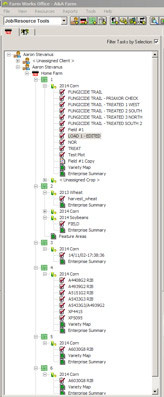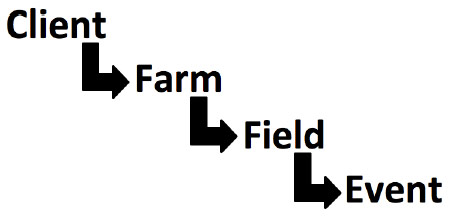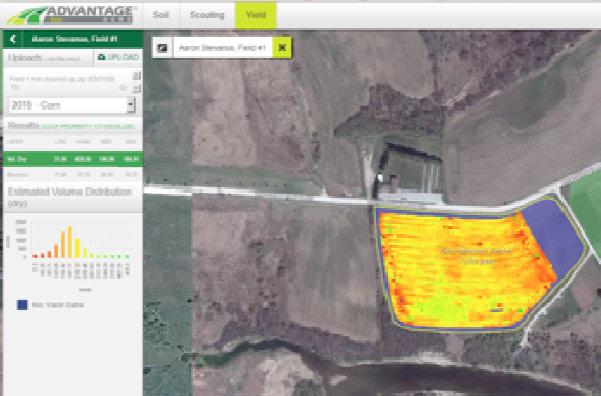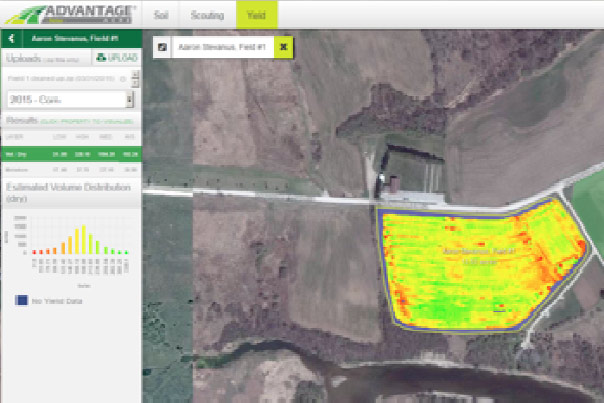Precision Ag is an extremely hot topic in agriculture. As technology has advanced to collect, sort and apply spatial data recorded by your planter, sprayer and harvesting equipment, we now have control over new variables in the field. From a 3D virtual image of your soil profile, to variable rate seeding, we can use these layers of data to adapt our management strategies 'on the go' to help mitigate risk, which aids in the end goal of being more profitable per acre. At present there are several companies that have services, software and hardware to aid you in your quest for perfection in the field, and all of them claim to have an excellent return on investment.
I’m suggesting that there are two key management factors that need to be prioritized before any investment in extra technology or services:
- Planter Set-Up & Maintenance
- Proper Data Management
 Without these two factors being properly maintained, your return on investment on new technologies and services is not being maximized. In this article I will specifically be referring to the importance of data management.
Without these two factors being properly maintained, your return on investment on new technologies and services is not being maximized. In this article I will specifically be referring to the importance of data management.
Organizing Information Properly:
Properly organizing your collected data is the first step in achieving success in Precision Ag. A well-organized hierarchy of data makes both the input and output function of data easier, and guarantees a more concise, accurate understanding of your collected data for each field. All data is collected and stored in the following hierarchy (regardless of what type of machine it is):
As you can see in the chart to the right, the information collected has been sorted in the same way. The program in the picture is Farm Works Office, but all the software packages available display the 'production tree' very similarly. In figure 1 you can see the Client, Farm, Field, Event(s) filled out for Field 1 as:
Client: Aaron Stevanus
Farm: Home Farm
Field: 1
Events: Fungicide Trial, Field #1, Test Plot, Variety Map, etc..
Why is the organization of data so important?
The easiest way to look at making management decisions through Precision Ag is comparing it to a Major League Baseball player’s batting average. The more at-bats a player has, the more accurate their batting average is. The same goes for Precision Ag! The more information each field has, the more confidence we have in the accuracy of the information provided for each field. Organization is important because it helps to correlate the year’s worth of data easily and efficiently.
Remember, a lot of the time it starts at the planter! Entering the correct Client, Farm, Field, and Event (hybrid) makes uploading the same information to your yield monitor much more efficient. This in turn makes your understanding of hybrid performance seamless when analyzing yield data in the winter months. When in doubt, remember the phrase 'garbage in, garbage out,' because the computer is only as smart as the information it is given.
Editing Yield Data: We sometimes assume our yield data does not need to be managed once it is taken out of the yield monitor and uploaded into our data management software. This statement could not be further from the truth, especially if it is data we want to use to help create a variable rate seeding script. In the figures below, I have two examples taken from the same field. Figure 2 is a direct download from the yield monitor without adjusting anything, and Figure 3 had been edited and had sections merged to make it one field.
When collecting information for writing a variable rate seeding (VRS) script, it is very important to have an accurate account of field variability. Field variability is one of the many factors that will affect a management zone when creating a script. As you can see in figure 2, there is not a lot of visual variability, and when you look at the histogram on the left there are too many high yield points in the +300 bu range that visually and numerically skew the data. (Figure 2) 

In Figure 3, yields were edited to give a better representation of what is going on in the field. Any values 311 bu/ac were removed because they were assumed to be poor data points. Then the headlands were trimmed and the test plot (which is missing in Figure 2) was merged into the field to give a more accurate account for whole field yield in 2015. As you can see in the histogram at the top, yields are more evenly dispersed and visually the yield map shows more variability. The field shown in Figure 3 is now ready to be added to the archive for VRS scripts.
These are just a few examples of the importance of good data management as we enter into the future of Precision Ag. As we move forward, management of data may be equally as important as selecting the proper variety or the correct fertilizer rate & analysis. Also, as our consumers continue to demand more food safety and traceability, good recording keeping and data management will be an essential component.


